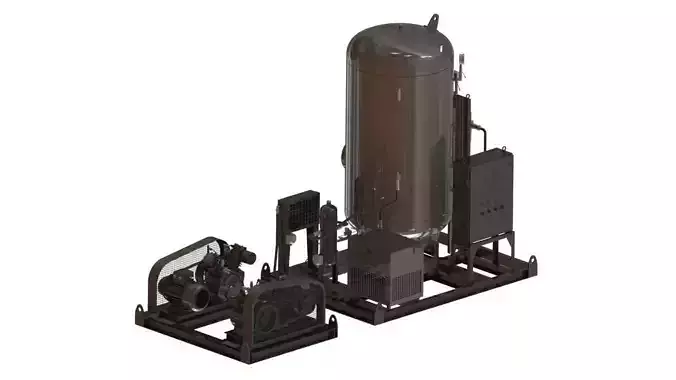1/2
This system is designed to supply compressed air at different pressure levels to various equipment and processes within a facility. Here's a breakdown of the components and the concept behind such a system:
Compressed Air Generation: The system starts with a compressor that takes in ambient air and compresses it to a high-pressure level. Compressors can vary in size and capacity depending on the needs of the facility.
High-Pressure Air: The compressed air at its highest pressure level is typically stored in a receiver tank. This high-pressure air can be used for applications that require a substantial amount of force or energy, such as running pneumatic tools or powering machinery.
Low-Pressure Air: From the receiver tank, the high-pressure air is then fed into a distribution network. This network includes pipes, hoses, and valves that regulate the pressure of the air as it is distributed throughout the facility. Some of this air is reduced in pressure to meet the requirements of equipment and processes that operate at lower pressure levels.
Pressure Regulation: Pressure regulators or control valves are used to adjust the pressure of the compressed air to match the specific needs of different devices and systems. This ensures that each piece of equipment receives the correct pressure for optimal performance.
End-Use Applications: The low-pressure compressed air is directed to various applications within the facility, such as pneumatic tools, air-operated machinery, conveyor systems, packaging equipment, and more. These applications rely on compressed air for power, control, or other operational functions.
By segmenting the compressed air system into high and low-pressure zones and regulating the pressure accordingly, this setup optimizes energy efficiency and ensures that each piece of equipment receives the appropriate air pressure it requires for its operation. This approach can help reduce energy consumption and improve the overall efficiency of a facility's compressed air system.
REVIEWS & COMMENTS
accuracy, and usability.


